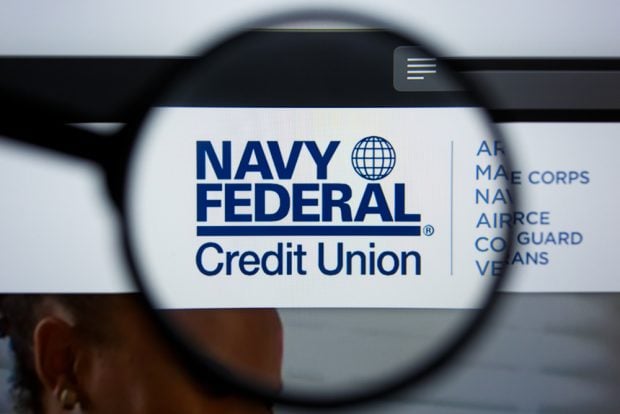WASHINGTON — Credit union political action committees for CUNA and NAFCU both reported record-breaking contributions last year. And so far this year, the PACs are on target to make a strong showing in an election year.
"As of the end of February we've given $1.5 million to candidates and committees and we're on pace for where we have been in the past," said CUNA Political Director Trey Hawkins.
In a flip from previous years, Hawkins said that 54% of contributions were given to Democrats and 46% to Republicans.
Recommended For You
In the last calendar year the Credit Union Legislative Action Council reported a record of $2 million for funds raised. Hawkins also said that CULAC is especially proud that the average overall donation for the past year was $26.
Most of the donations Hawkins said came from CULACs payroll deduction and "deduct-a-buck" programs. CULACs most recent fundraising project, payroll deduction, began at the end of 2005 and has received a great response in its first few years.
"We've raised over $200,000 from over 100 credit unions with payroll deduction in 2007," Hawkins said. "It's an easy way to contribute and a great way for us to obtain regular donations."
Since its inception Hawkins reported that payroll deduction has brought in approximately $411,000 for CULAC.
"As you can see there has been tremendous growth for CULAC from payroll deduction," Hawkins said.
With the fundraising success CULAC has seen, Hawkins said the PAC still has $600,000 in cash on hand as a stock pile to make sure that down the road they have the funds to back a candidate if needed.
Looking back at the last election cycle, CULAC raised $3.75 million and gave out $3.3 million along with independent expenditures, which is a political contribution in the form of a TV ad, a flyer or a phone campaign without the candidate's cooperation or knowledge.
Smaller in size than CULAC, the NAFCU/PAC has seen growth over the last few years and last year reported its best year yet.
"Last year was best year with the PAC, and I think we will definitely give more this being an election year," said NAFCU Director of Political Affairs Dillon Shea.
Last election year, NAFCU/PAC contributed $235,863, and so far this year $59,044 has been contributed.
"We've contributed a little less this year than at this point last year," Shea said. "But the difference is negligible."
Shea attributes the record year last year to a natural product of the growth that the PAC has seen over the last few years.
"As for why last year was our best yet, there is no specific reason," Shea said. "We had a couple of credit unions that made a real push to raise more money for the PAC, and it was just a result of having a few more people that dedicated themselves to helping NAFCU/PAC."
While both CULAC and NAFCU/PAC are heading toward another strong year they still face the challenge of being out-funded by bank PACs.
In total contributions so far for the 2008 election cycle bank PACs have contributed more than $17 million to the $1.6 million total contributed by credit union PACs as of March 3, 2008, according to the Center for Responsive Politics.
In order to compete with those numbers credit union PACs have to carefully allot where their funds go.
"Clearly in size, banks have got us beat so we have to be smart where we target our money," Shea said.
Every week the NAFCU/PAC combs through the donations to see what they have and where it should go.
"We look at committees with the most interest and see how supportive or not supportive they've been in the past, if they've been a big sponsor of CURIA and been helpful to us," Shea said.
Hawkins said that to compete with banks, CULAC takes each contribution and race on a case-by-case basis.
"We're one of the top 10 to 15 PACs in terms of contributions we make," Hawkins said. "But banks on a one-on-one basis spend more."
In the last election year, Hawkins said CULAC supported over 380 candidates with their funds and 95% of those candidates won.
"We work very hard to make sure that not only the candidates support credit unions but that they are also politically viable so that our money doesn't go to waste," Hawkins said.
On the state level Vice President of Government Affairs Amy Hines Kramer said that the NYSCUL/PAC holds its own against the banks. However, she said they do face the challenge that many more bank executives give individually and many more banks give directly.
Kramer said that one of the things they look to do is educate credit unions about the needs for political funds.
"We remind CUs to get proactive in the state because a lot of those folks become members of Congress," Kramer said. "We face challenges from bankers now with a PAC so I shudder to think what would happen without it."
For the California and Nevada Credit Union Leagues, Director of Political Finance Katie Newton said that their PAC looks to educate potential legislators on issues affecting the industry through pre-election interviews.
"We invite every candidate to meet with us and complete a questionnaire," Newton said. "Beyond that process, we look at the viability of the candidate to be elected to the district and their ties to credit unions within the district she or he would like to serve."
© Touchpoint Markets, All Rights Reserved. Request academic re-use from www.copyright.com. All other uses, submit a request to [email protected]. For more inforrmation visit Asset & Logo Licensing.






